Last updated on October 14, 2023
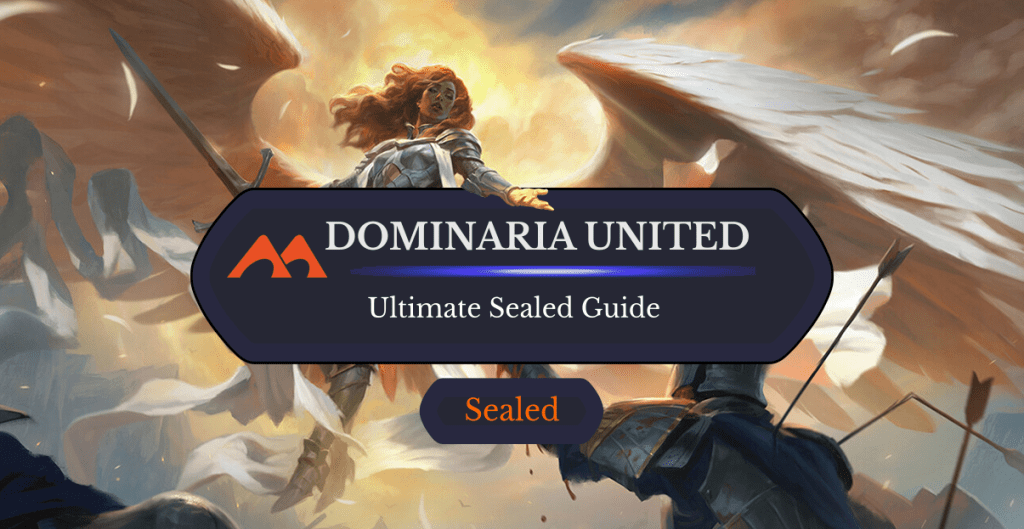
Serra Paragon | Illustration by Heonhwa Choe
Greetings planeswalkers! Today’s it’s time to take a look at all things Sealed in the newest set, Dominaria United. How does the format look? How should you build you mana base? What cards should you snatch up, and which ones should you avoid?
Let’s crack the only six packs the average Magic player has and find out!
Format Summary

Timeless Lotus | Illustration by Lindsey Look
As far as formats go, Dominaria United tends to skew greedier and slower than the vast majority of Sealed formats. This set’s primary feature is the domain mechanic and the proliferation of a lot of incentives to play more colors.
Most pools in Dominaria United will play more than two colors of mana. Three to five are all viable choices depending on the pool. From my experiences playing the set, 2-color decks may even be rarer than 5-color ones!
A good example of what this actually looks like in practice can be seen with this 5-0 League I played:
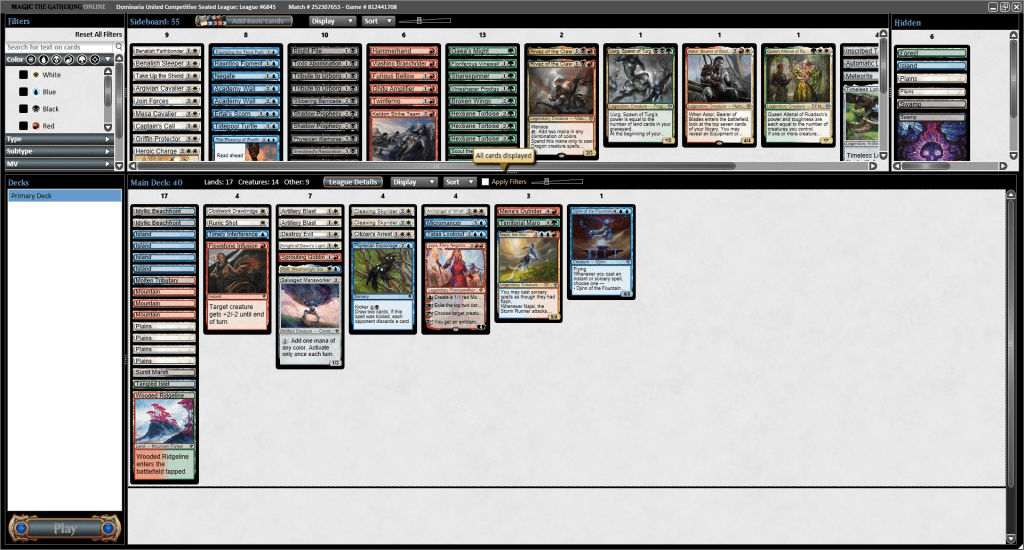
I was mostly playing 3-color with a base Jeskai () deck splashing green for Territorial Maro and Sprouting Goblin’s kicker. I also had blue mana from Sunlit Marsh and Salvaged Manaworker so that I could occasionally double kick Archangel of Wrath. The deck had quite a bit of removal and some solid uncommons/commons to make up its creature base.
Conversely, let’s take a look at a deck I played that took a very different approach:
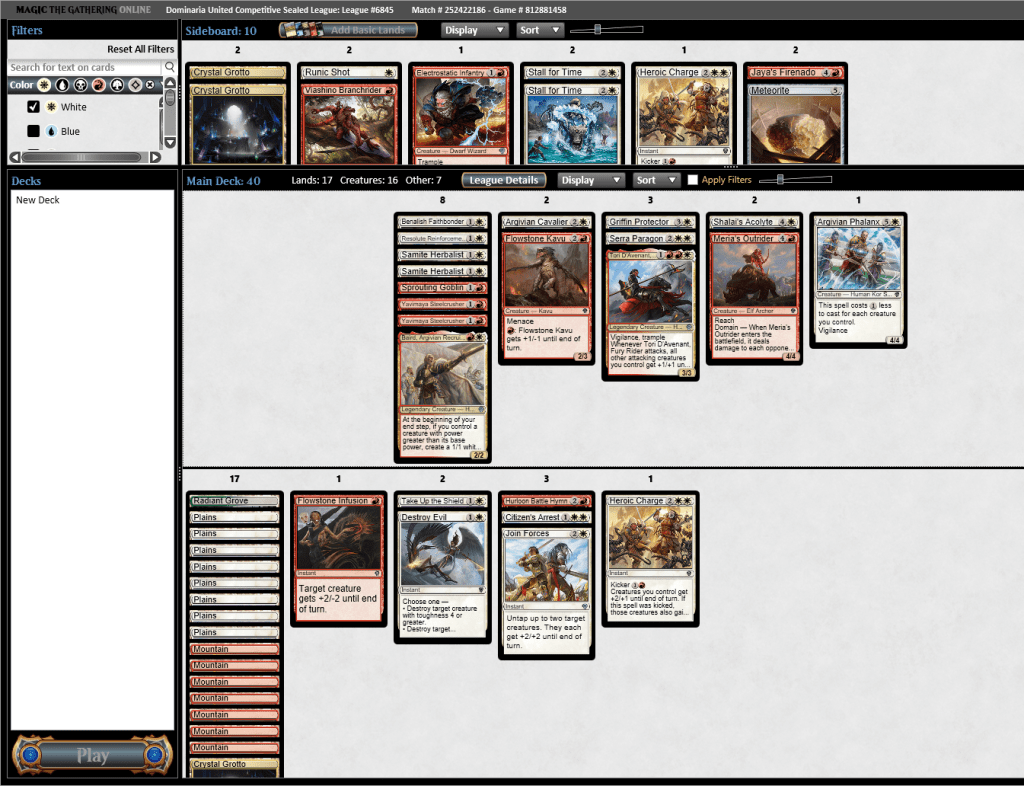
This deck was quite aggressive for Sealed. I had eight 2-drops, good pump spells, and a couple 2-color incentives, so I decided to play Boros () and turn things sideways. You may find yourself in a similar spot if you open a pool lacking bombs or good mana fixing. I’d caution against doing this though if you don’t have enough 2-drops because you have to establish a lead early or such strategies will easily get outcarded by 5-color piles.
Building Mana Bases in Dominaria United
The most important step to being successful in this Sealed format is understanding how to build mana bases correctly. Dominaria United offers you plenty of tools to improve your mana, the most convenient of which are the common dual lands. These have basic land types which makes them essential for domain. In fact, your pool’s best color orientation may in part be determined by the lands you open.
This is unusual, but it comes down to domain and how most pools play every dual they open when domain is relevant. Take this 4-color deck for instance:

I was base Gruul () but touched on other colors for domain boosts to Nael and Herd Migration. If I were to start by saying “I’m playing all of my duals” (ignore Crystal Grotto for now), my initial mana numbers would look like this:
- 5 lands total
- 2 white
- 1 blue
- 2 black
- 3 red
- 2 green
So my pool’s duals naturally oriented me towards red, which I was happy to pursue anyways thanks to Lightning Strike and The Elder Dragon War. Once all your duals are in and you’ve counted mana symbols, the next step is always to figure out how to split your basics.
Here are some tips:
- Playing one basic of each type is recommended when you’re playing land fetchers like Scout the Wilderness and The Weatherseed Treaty.
- You might still want to play an off-color basic anyway to get full domain in the late game even if you don’t have those.
- The opportunity cost of playing non-base color basics is mostly a reduction in consistency. You might have to mulligan more hands than you would otherwise or suffer early game stumbles. Your goal should always be to achieve 7+ sources (ideally around 9) of your primary colors before adding off-color basics.
- There may be less pressure on you to include a basic (or basics) of that land type if you have several duals of the same land type.
- Crystal Grotto has overperformed and is a card I’m happy to play a copy of (unlike most Unknown Shores, which is dreadful). Scry 1 is a great bonus, and having a 5-color land can be a huge help in a pinch.
Macro Archetypes Ranked
Dominaria United is a wide open format since there isn’t only quite a bit of mana fixing/splashing but also a good amount of strategic flexibility. There are 2-color signposts like any normal set, but most 2-color themes are a bit sparse to pull off in Sealed.
There’s also quite a bit of overlap between a lot of these 2-color pairs, which can lead to builds touching on multiple themes. The archetypes I’d expect to see are domain, spells matter, tokens, sacrifice, and self-mill.
#5. Selesnya/Red Tokens
Tokens are a well-supported archetype in this set, albeit one usually better situated for Draft. You’d want generators like Captain's Call and Argivian Cavalier, mass pump like Strength of the Coalition and Heroic Charge, and ideally a few payoff cards like Queen Allenal of Ruadach to play tokens in Sealed.
Opening all of this in six packs is unlikely, and this archetype also has the extra problem of opportunity cost. The cards needed to make tokens click tend to not be great on their own, so making the conscious choice to prioritize these synergies might cost you some card quality.
Sweepers can also be an issue. There are several rare sweepers in the set plus Smash to Dust and Choking Miasma. Still, you want to at least consider the option for if you open all the best payoffs.
#4. Rakdos/White Sacrifice
This is a pair of archetypes encompassing a wide swathe of micro-synergies across the set. Some of the best Dominaria United cards with payoffs for sacrificing creatures are Lagomos, Hand of Hatred, Elas il-Kor, Sadistic Pilgrim, and Weatherlight Compleated.
You can sacrifice creatures using Bone Splinters, Gibbering Barricade, Benalish Sleeper, Phyrexian Warhorse, and Hurler Cyclops. Some of the most efficient creatures to sacrifice are Cult Conscript, Phyrexian Rager, and tokens from cards like Captain's Call. In Thrall to the Pit becomes a very appealing card for the classic Treason plus sac gameplay loop if you’re already playing sac outlets.
I don’t often play these synergies in Sealed since sacrifice requires a good mix of cards that make it easier to pull off in Draft.
#3. Golgari/Blue Graveyard/Self Mill

This is an easy archetype to incorporate into other decks, and a lot of its signature cards are pretty good. Self-mill/graveyard payoffs are mostly an Abzan () thing in Dominaria United, so you’ll often be at least 3-color when putting these synergies together.
This archetype can best be understood as ways to fill your graveyard plus cards that care about your graveyard. There are cards in this set that want creatures in the graveyard (Urborg Repossession, Bortuk Bonerattle, Writhing Necromass), spells in the graveyard (Tolarian Terror, Tribute to Urborg), and one card that wants lands (Uurg, Spawn of Turg). Eerie Soultender and Shadow Prophecy are bread and butter cards for filling up your graveyard and getting value.
#2. Azorius/Black/Red Instants/Sorceries
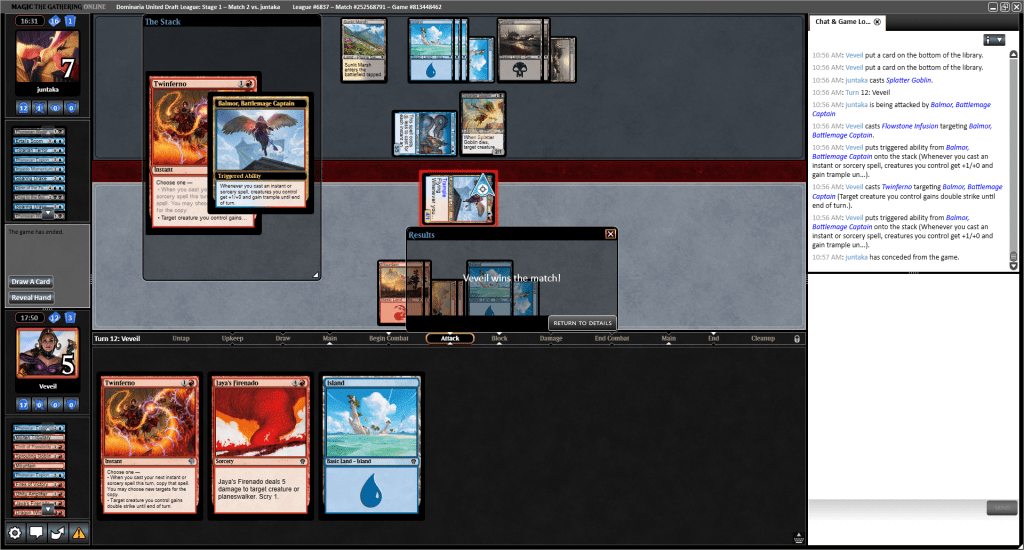
This archetype actually encompasses three slightly different archetypes, but they all play off the same theme (payoffs for casting instants/sorceries). The best payoff at common for doing so is Tolarian Terror, which has great sizing and is inconvenient to remove for your opponent. There are also some very strong uncommons that incentivize instants/sorceries, like Raff, Weatherlight Stalwart, Balmor, Battlemage Captain, and Electrostatic Infantry.
The three flavors of blue-based instant/sorceries are Azorius () tokens/spells, Izzet () prowess/spells, and Dimir () control/spells. Azorius naturally goes wide with Tura Kennerüd, Skyknight and is rewarded for doing so by Raff. It can also play Captain's Call to double dip on tokens/sorceries. Izzet is the most aggressive of the three archetypes and can even sometimes pull off combo kills with Twinferno and other spells.
Dimir is best built as a pretty traditional control deck with removal, card draw (Phyrexian Espionage and Shadow Prophecy are a must), blockers, and bombs. Keep in mind that you can easily overlap these themes by splashing for signposts and removal from other colors, but you’ll always play blue.
#1. Domain/5-Color Good Stuff
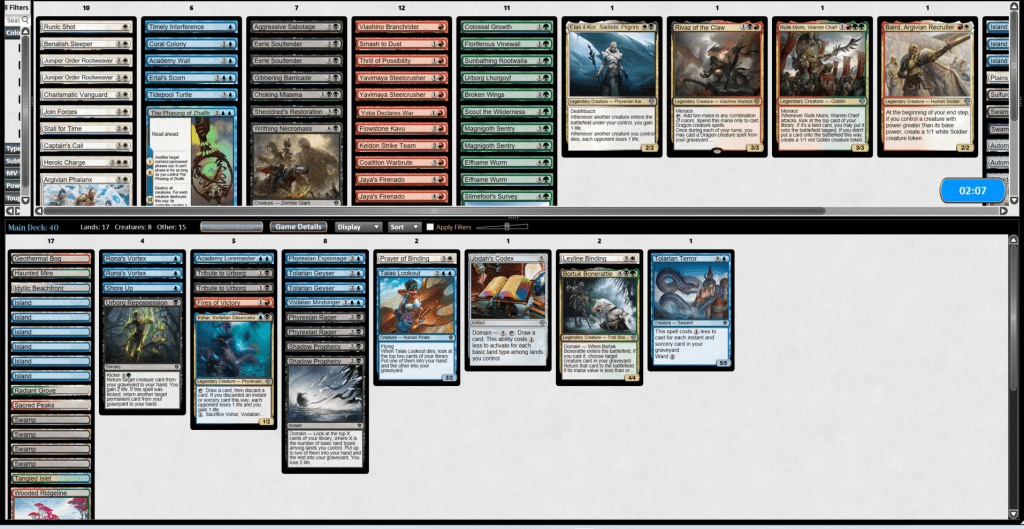
Domain is the best and most common archetype for sure, but this is mostly because domain easily overlaps with other themes.
This is a controlling deck with a bunch of card advantage (two Shadow Prophecys, two Phyrexian Ragers, Urborg Repossession, Jodah's Codex, Phyrexian Espionage), removal and a couple of bombs. It’s mostly a Dimir deck but splashes green for Bortuk Bonerattle, red for Fires of Victory, and white for two removal spells. I posted this list to show how easily this would fit into instants/sorceries control while still pulling off domain.
In fact, you can basically do domain plus any of the archetypes in this set (aggro included) as long as you have the right dual lands. It’s always of vital importance to assess what lands you’ve opened and what kind of domain payoffs you have.
Domain Card Breakdown
One aspect of domain to touch on is that not all domain cards are worth optimizing for. Domain cards have very different degrees to which achieving 5-color basics actually matters. Sunbathing Rootwalla for instance plays just fine with three basics, while Jodah's Codex needs four or five or it’s too slow to use.
You can bet you’ll play off-color basics plus every land you have if you’ve got a significant number of domain cards and some of the better payoffs. On the other hand, if your deck is just playing a couple mediocre domain commons, you’re unlikely to want the tradeoff in speed and consistency that comes with extra basics or lands.
Best Payoffs for 5-Color
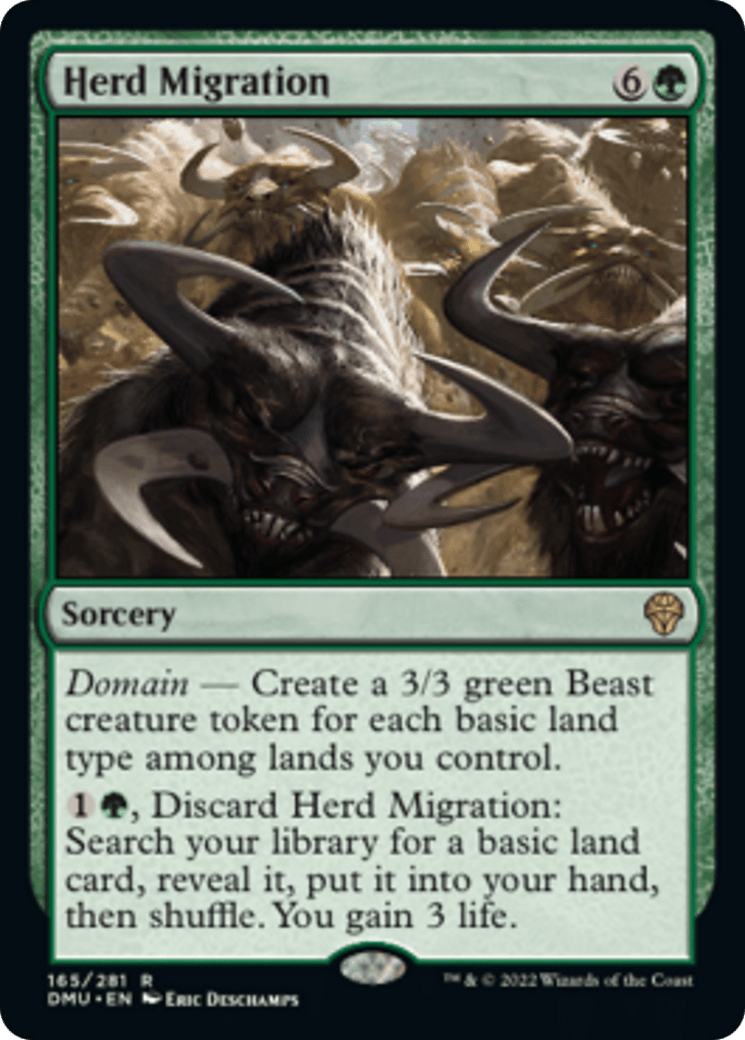
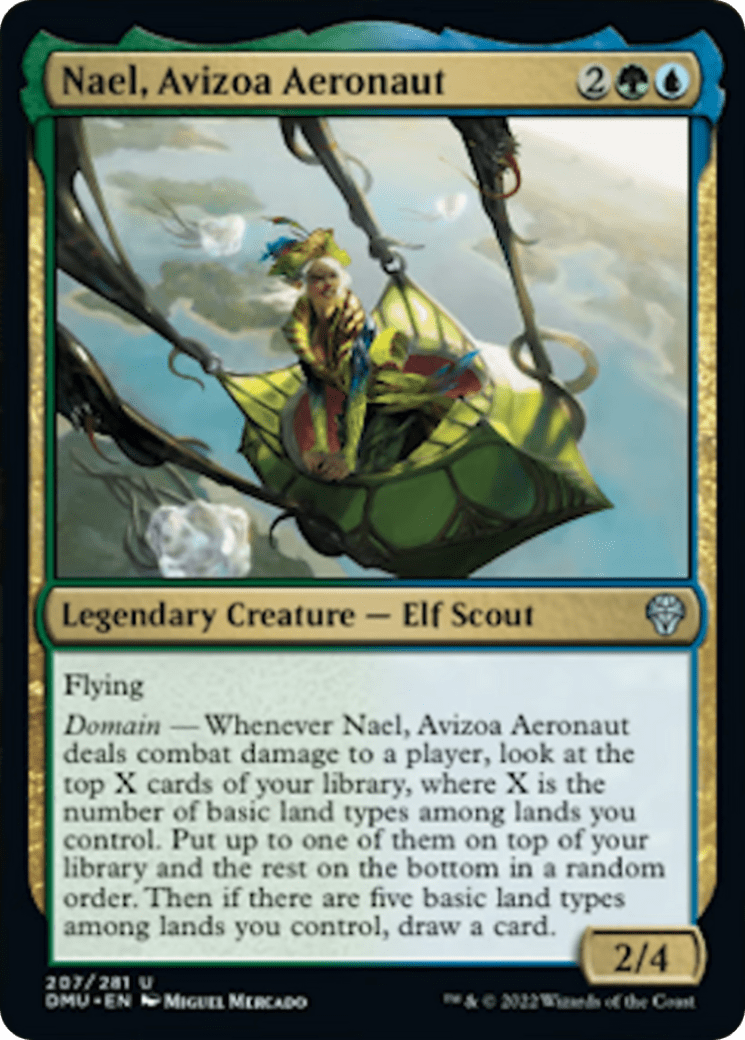
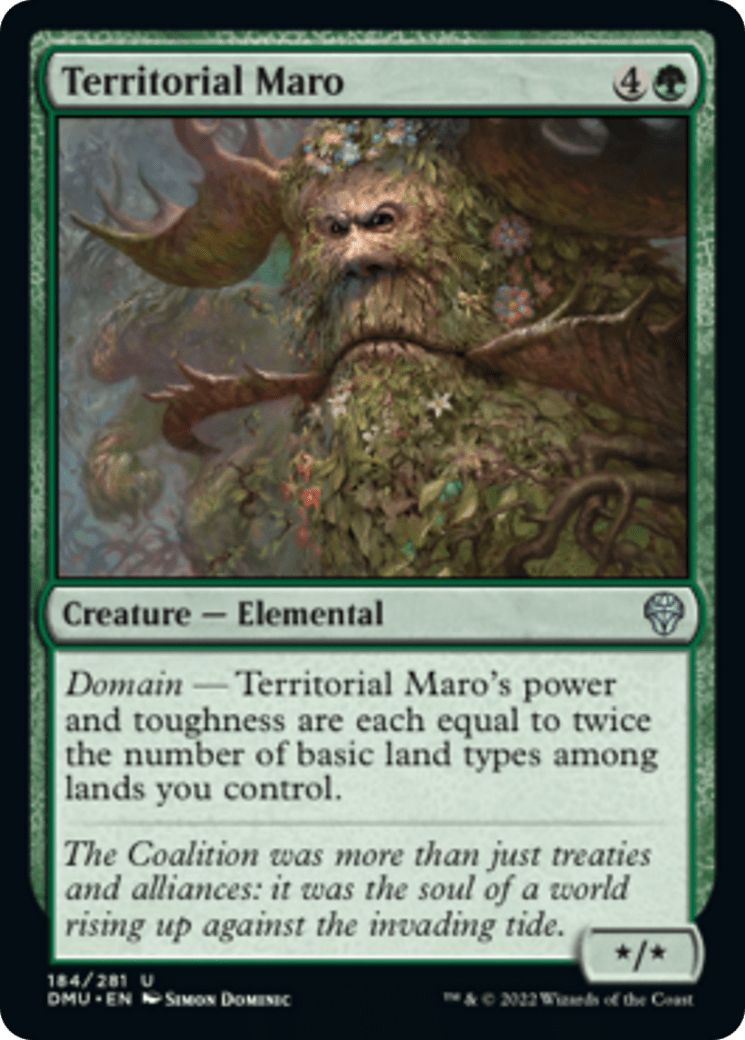
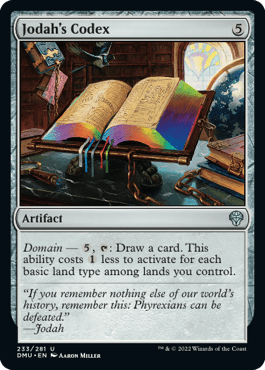

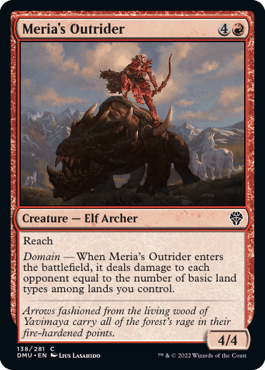
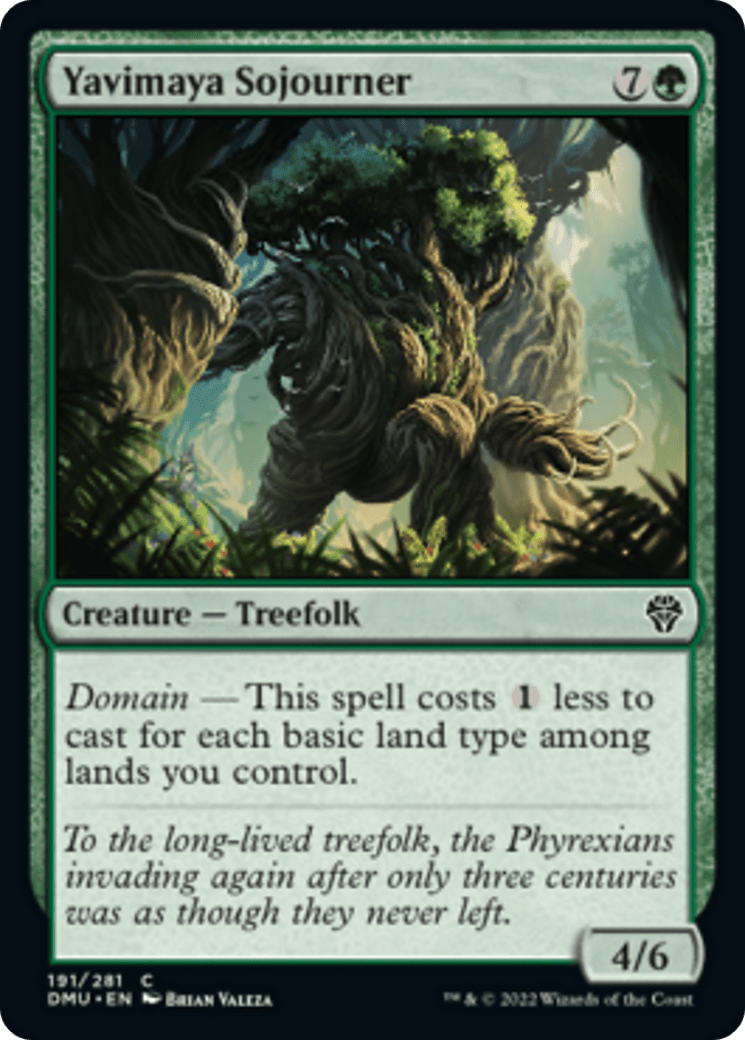

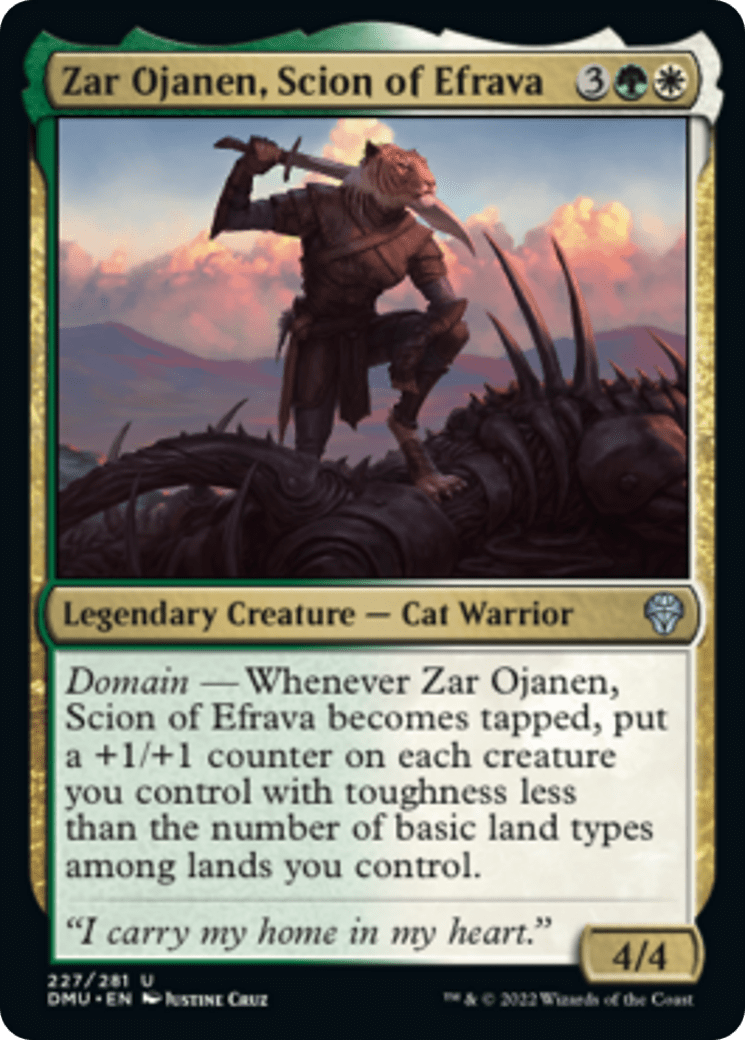
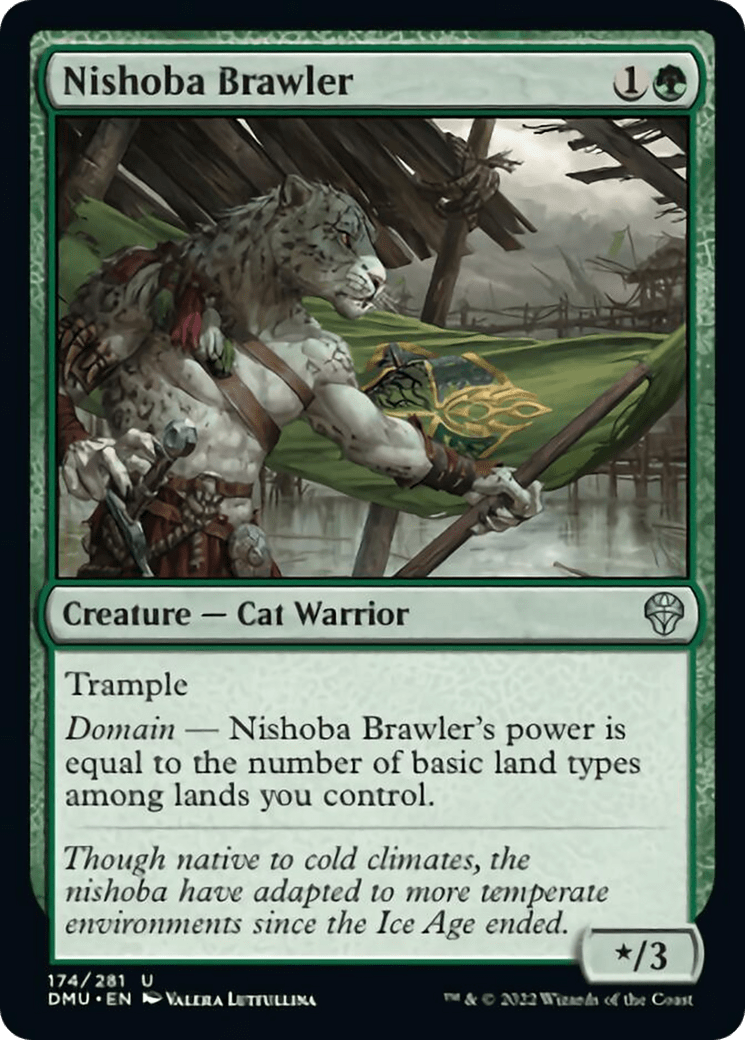

- Gaea's Might
- Meria's Outrider
- Yavimaya Sojourner
- Slimefoot's Survey
- Zar Ojanen, Scion of Efrava
- Nishoba Brawler
- Radha, Coalition Warlord

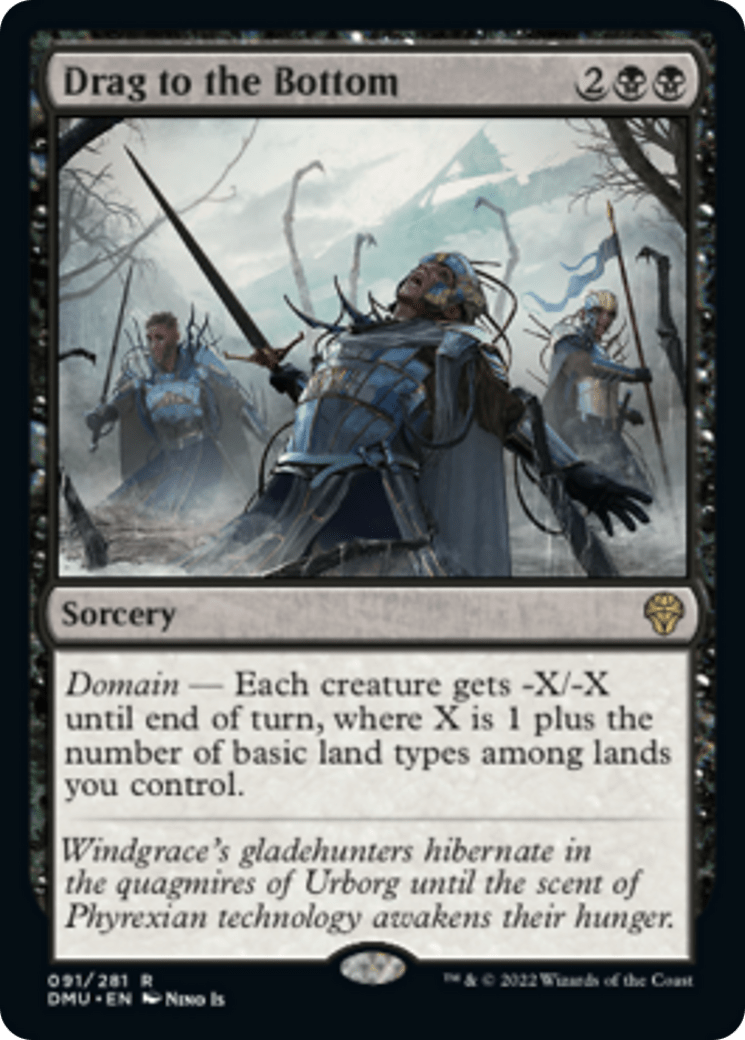
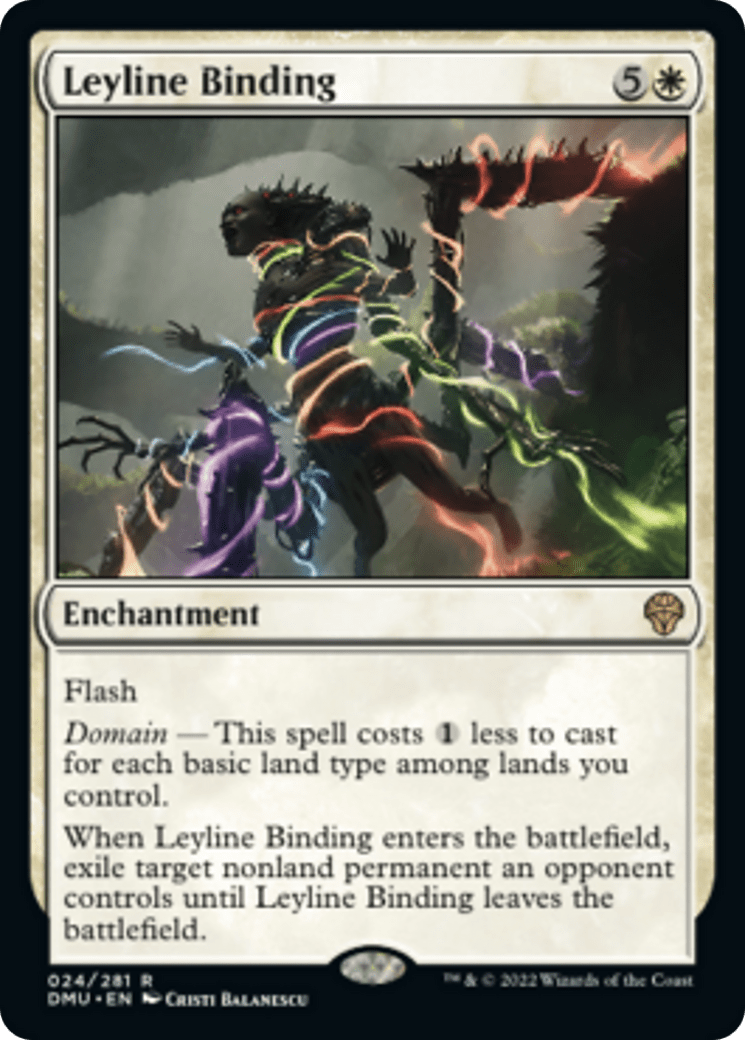
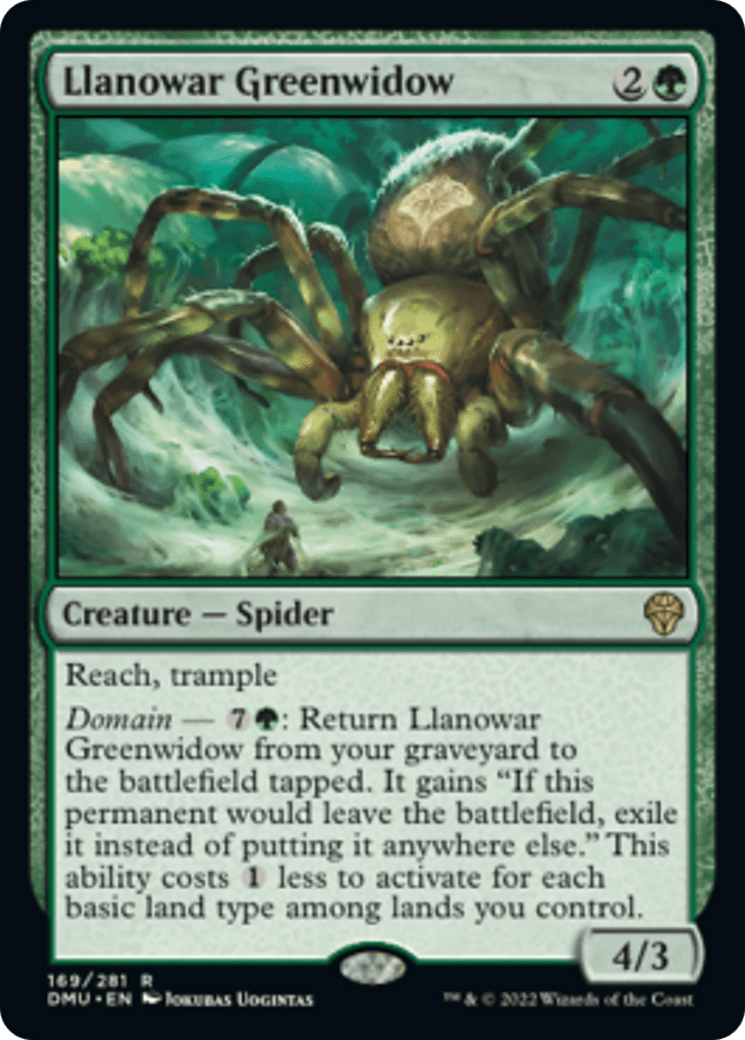
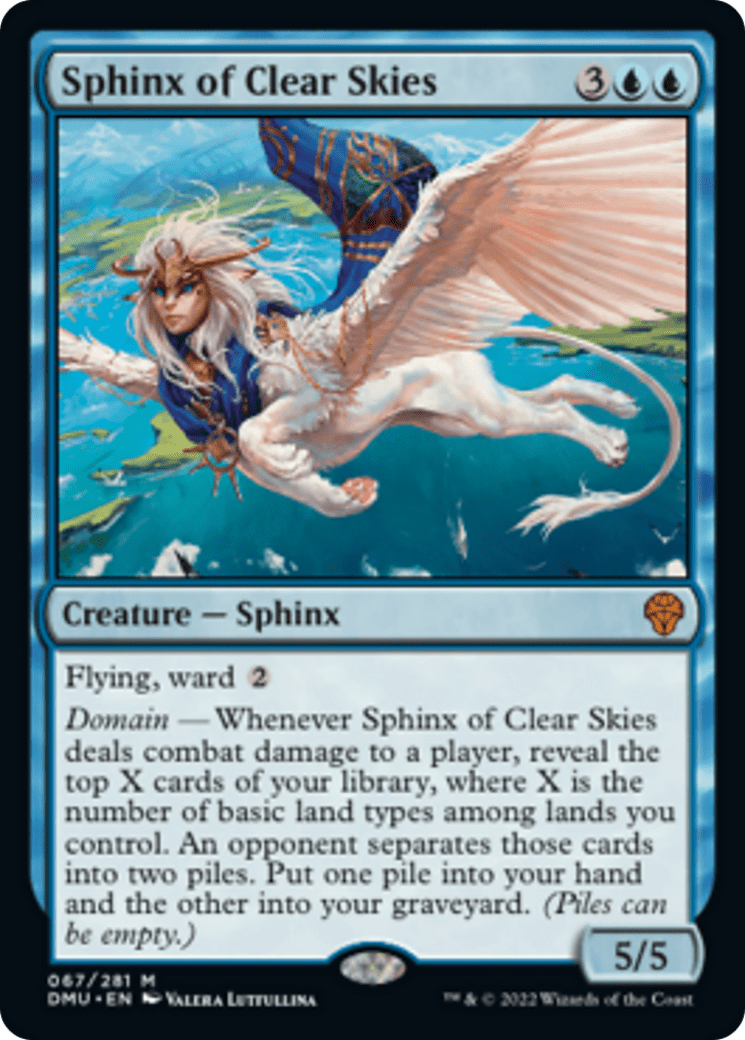

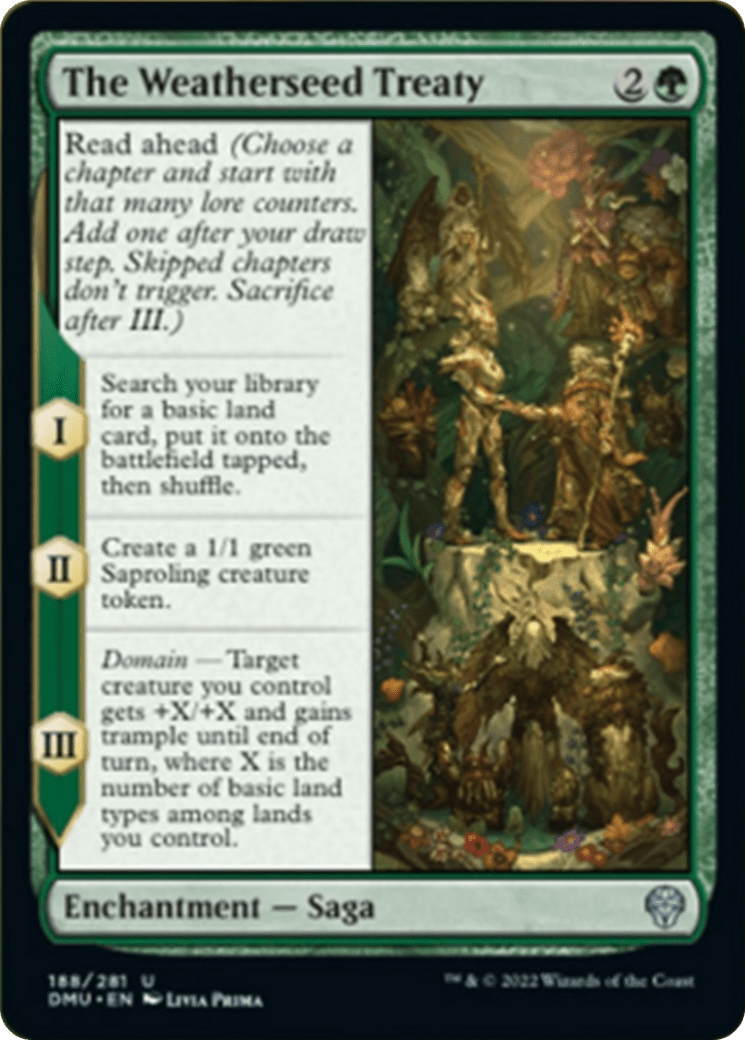

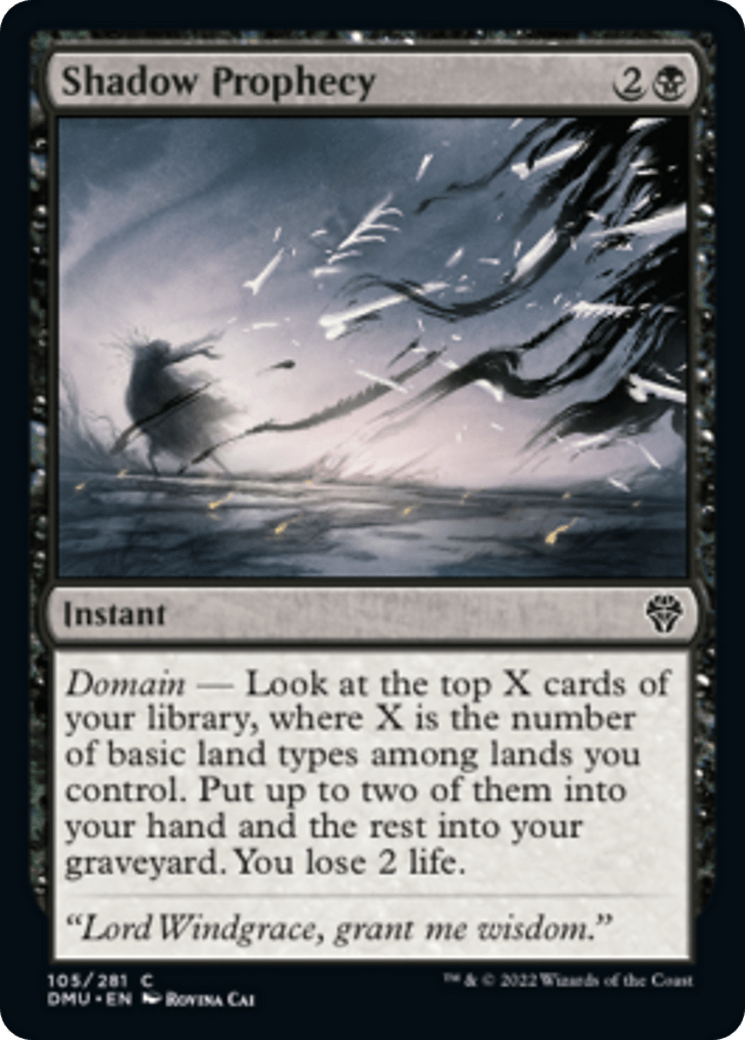
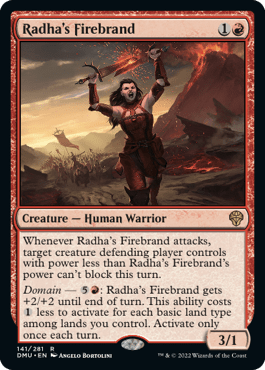
- Bortuk Bonerattle
- Drag to the Bottom
- Leyline Binding
- Llanowar Greenwidow
- Sphinx of Clear Skies
- Sunbathing Rootwalla
- The Weatherseed Treaty
- Voda Sea Scavenger
- Shadow Prophecy
- Radha's Firebrand
Bomb Rares
Bomb rares are a much maligned feature of Sealed. There’s something about losing to broken rares that just brings out the salt in all of us. Last year’s Vegas wedding set, Crimson Vow, pushed a lot of players to their absolute limit on this front.
Players would draft a cool, synergistic deck and then go 0-2 to cardboard abominations like Toxrill, the Corrosive, Dreadfeast Demon, Henrika Domnathi, Avabruck Caretaker, Hullbreaker Horror, Halana and Alena, Partners, Wedding Announcement, Cemetery Desecrator… and what seemed to be 100s more unbeatable rares.
So how does Dominaria United compare to Crimson Vow on this front? Well, it certainly does have bombs, but they’re fewer in number and more beatable. Archangel of Wrath is a disgusting Limited card, but it’s still no Toxrill or Dreadfeast Demon. If anything, DMU may have the opposite problem of Crimson Vow.It has some bombs and some great rares, but it also has a lot of mediocre rares that can eat up your six slots.
The cycle of 2-color rare legends is a particular culprit here because Dominaria United has such thin support for Meria, Scholar of Antiquity, Astor, Bearer of Blades, Jhoira, Ageless Innovator, and Rivaz of the Claw that they may as well be vanilla creatures. Pain lands, Plaza of Heroes, and Thran Portal are also unexciting to open, and there are two rares that are more or less 100% unplayable.
My approach to rares in Dominaria United is the same as in many sets: play as many of the good ones as possible! This set makes this easier thanks to the above-average mana fixing and focus on achieving domain, so expect to splash in almost every pool.
Below I’ve done a tier list of sorts for your convenience. Having heuristics for how important your rares is important for both saving time and deciding how to build your mana base. If you open Temporal Firestorm or Sheoldred, the Apocalypse, you’re 99.9% going to play them and have to build my mana base around or .
On to the list (mythics are italicized)!
Broken Rares (100% Must Play)
- Archangel of Wrath
- Herd Migration
- Rith, Liberated Primeval
- Serra Paragon
- Sheoldred, the Apocalypse
- Shivan Devastator
- Sphinx of Clear Skies
Bombs (Play/Splash if Possible)
- Ajani, Sleeper Agent
- Danitha, Benalia's Hope
- Defiler of Instinct
- Defiler of Vigor
- Drag to the Bottom
- Jaya, Fiery Negotiator
- King Darien XLVIII
- Llanowar Greenwidow
- Nemata, Primeval Warden
- Silverback Elder
- Sol'kanar the Tainted
- Soul of Windgrace
- Temporal Firestorm
- The Cruelty of Gix
- The Elder Dragon War
- Vodalian Mindsinger
Good Rares (Sometimes Worth Splashing)
- Aether Channeler
- Anointed Peacekeeper
- Braids, Arisen Nightmare
- Defiler of Dreams
- Defiler of Faith
- Defiler of Flesh
- Ertai Resurrected
- Evolved Sleeper
- Guardian of New Benalia
- Haughty Djinn
- Jodah, the Unifier
- Karn's Sylex
- Karn, Living Legacy
- Keldon Flamesage
- Leyline Binding
- Liliana of the Veil
- Llanowar Loamspeaker
- Quirion Beastcaller
- Radha's Firebrand
- Ratadrabik of Urborg
- Shanna, Purifying Blade
- Silver Scrutiny
- Squee, Dubious Monarch
- The Raven Man
- Urborg Lhurgoyf
- Valiant Veteran
Mediocre Rares (Sometimes Playable, Rarely Good)
- Academy Loremaster
- Astor, Bearer of Blades
- Ivy, Gleeful Spellthief
- Jhoira, Ageless Innovator
- Leaf-Crowned Visionary
- Meria, Scholar of Antiquity
- Rivaz of the Claw
- Shadow-Rite Priest
- Stenn, Paranoid Partisan
- Stronghold Arena
- Golden Argosy
- The World Spell
- Threats Undetected
- Timeless Lotus
- Vesuvan Duplimancy
- Vodalian Hexcatcher
- Weatherlight Compleated
- Zur, Eternal Schemer
Bad Rares (Usually not Playable)
100% Unplayable
Lands
- 6 pain lands (Adarkar Wastes, Caves of Koilos, Karplusan Forest, Shivan Reef, Sulfurous Springs, Yavimaya Coast), which are about as good as common duals
- Plaza of Heroes (good if you have a lot of legends, otherwise avoid)
- Thran Portal (try not to play, slow and painful)
What to Expect from Commons and Uncommons
Uncommons
There are 80 uncommons in Dominaria United, but I won’t be doing a full set review of them here. I want to stress some things you can expect from your uncommons in most pools. The purpose of this exercise is to save you time on deckbuilding and prime your mind on what to look for.
First off, you’ll always have six legends in every Dominaria United Sealed pool. These can be rares/mythics, but most of the time they’ll be uncommons. There are 20 uncommon legends in this set, with two for each 2-color pair. These vary immensely in quality. The best ones for me in Sealed have been Tatyova, Steward of Tides, Nael, Avizoa Aeronaut, and Bortuk Bonerattle.
I’ve been less impressed with more synergistic cards like Balmor, Battlemage Captain and Lagomos, Hand of Hatred, which can be great but don’t excel in your average 5-color greed pile. But these cards often act as tiebreakers or guides towards the base orientation of your deck’s mana base and spell selection.
Another thing to look for at uncommon are payoffs for the defenders theme. If you’re not aware of this, defenders is a small theme in Dominaria United with five commons, one in every color but red and Shield-Wall Sentinel and three uncommon payoffs: Coral Colony, Blight Pile, and Wingmantle Chaplain. Chaplain has gotten a lot of press as the best uncommon in the set, for both its power level and its accessibility, so any Sealed pool with Chaplain and a couple of Defenders will likely want to play all of them, especially if any of those defenders are Shield-Wall Sentinel.
Many of the other uncommons in this set are powerful kicker cards that act as 2-color incentives. Some of the best kicker cards in Dominaria United are premium uncommons: Sprouting Goblin, Strength of the Coalition, Rona's Vortex, Hurloon Battle Hymn, Cleaving Skyrider, Fires of Victory, Phyrexian Missionary, and Tear Asunder are all quite strong.
Some other uncommons to be on the lookout for are domain payoffs. Nishoba Brawler, The Weatherseed Treaty, Territorial Maro, and Jodah's Codex are all cards I’ve been impressed by in normal 5-color piles.
It’s also worth noting that most of the sagas in this set are not good. Founding the Third Path and Yotia Declares War are unplayable, while Braids's Frightful Return and Love Song of Night and Night are mediocre. Both of those have a weak chapter I that you skip 99.9% of the time, so evaluate Frightening Return as a Recover of sorts and Love Song as a 1/1 Bird plus Gird for Battle.
Commons
As with any Sealed format, the bulk of your pool will be commons. The most important commons in Dominaria United Sealed are probably removal spells and dual lands. The lands are essential for conveniently achieving domain and enabling greedy bomb and kicker splashes.
There’s no set number of these per pack, so some pools have much more fixing than others. Let’s briefly cover some characteristics of each color in this set at common.
White
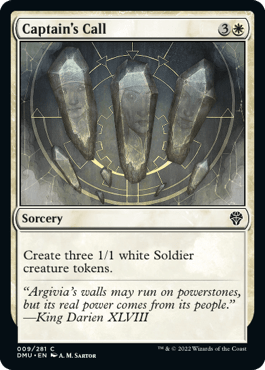
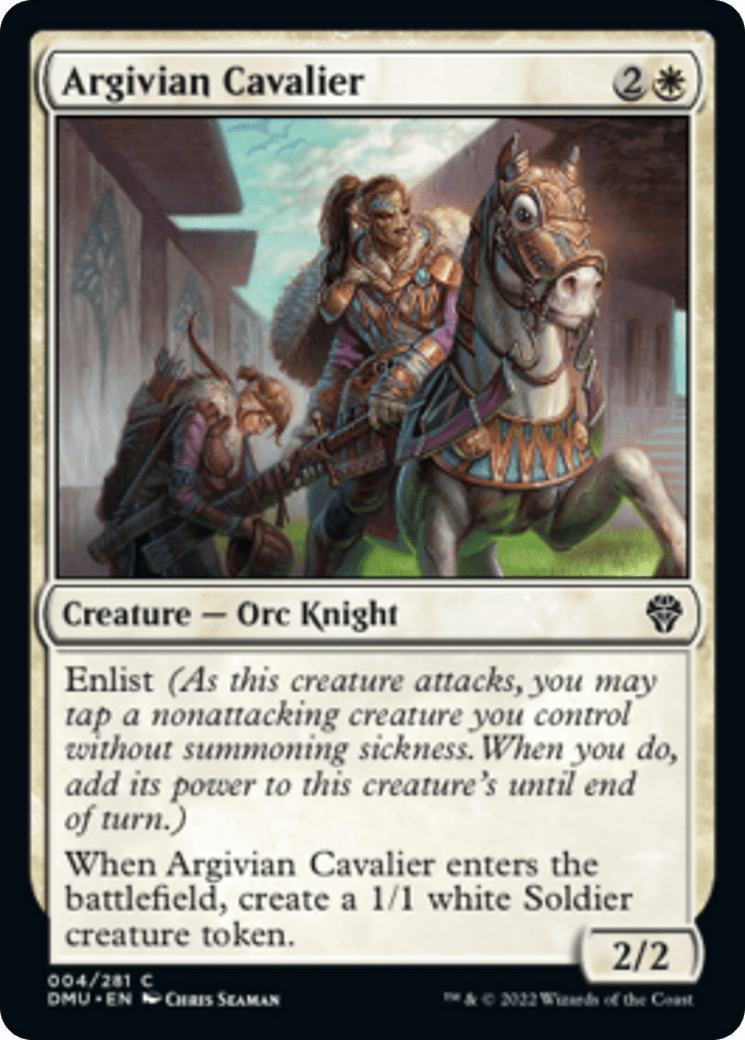
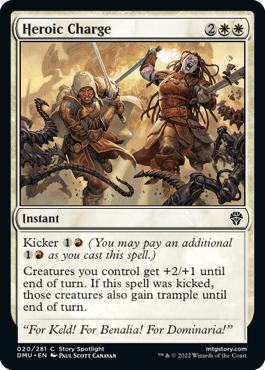
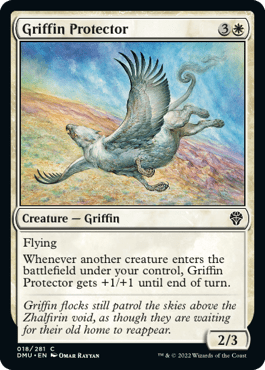

White’s primary strength in Dominaria United is going wide, with Captain's Call and Argivian Cavalier as token makers and Heroic Charge, Griffin Protector, and Argivian Phalanx as payoffs. White is rarely a base color if you aren’t aggressive or focused on tokens.
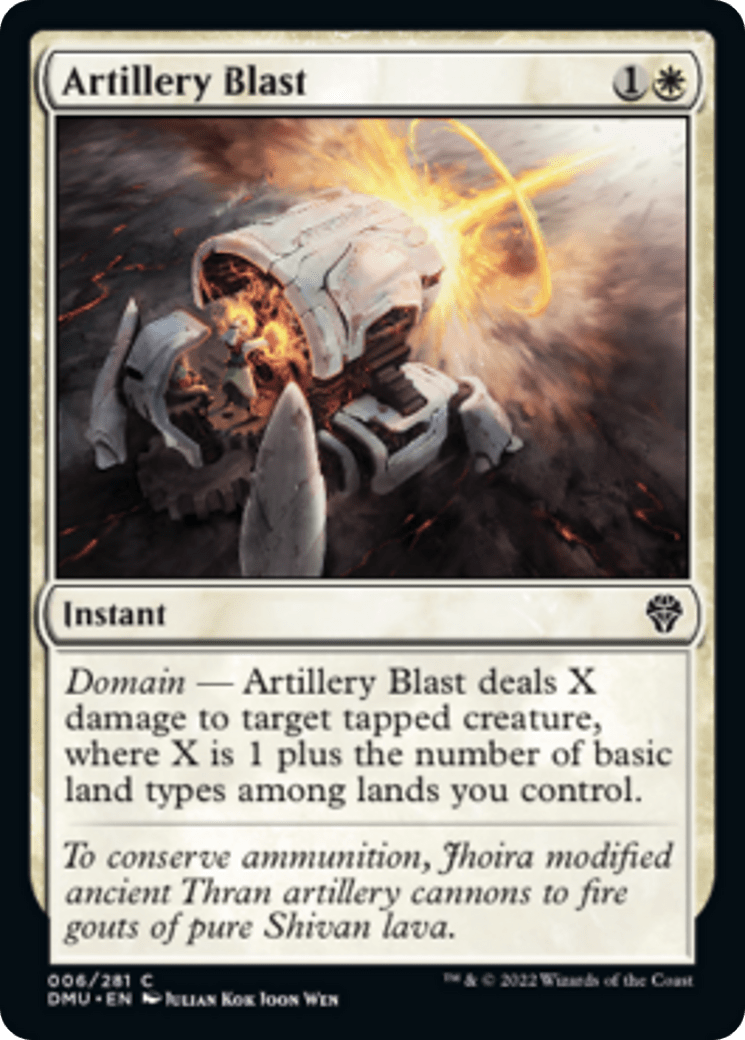

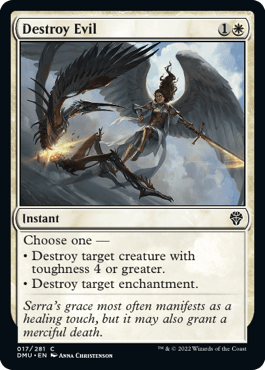
White also has three playable removal spells at common: Artillery Blast, Citizen's Arrest, and Destroy Evil. Destroy is the best of these for Sealed. It won’t kill small creatures, but it answers tons of large creatures, blows out pump spells, and blows up enchantment-based removal. Speaking of enchantment-based removal, Arrest is flexible and fairly costed, but its cost can be an issue in decks without at least eight white sources.

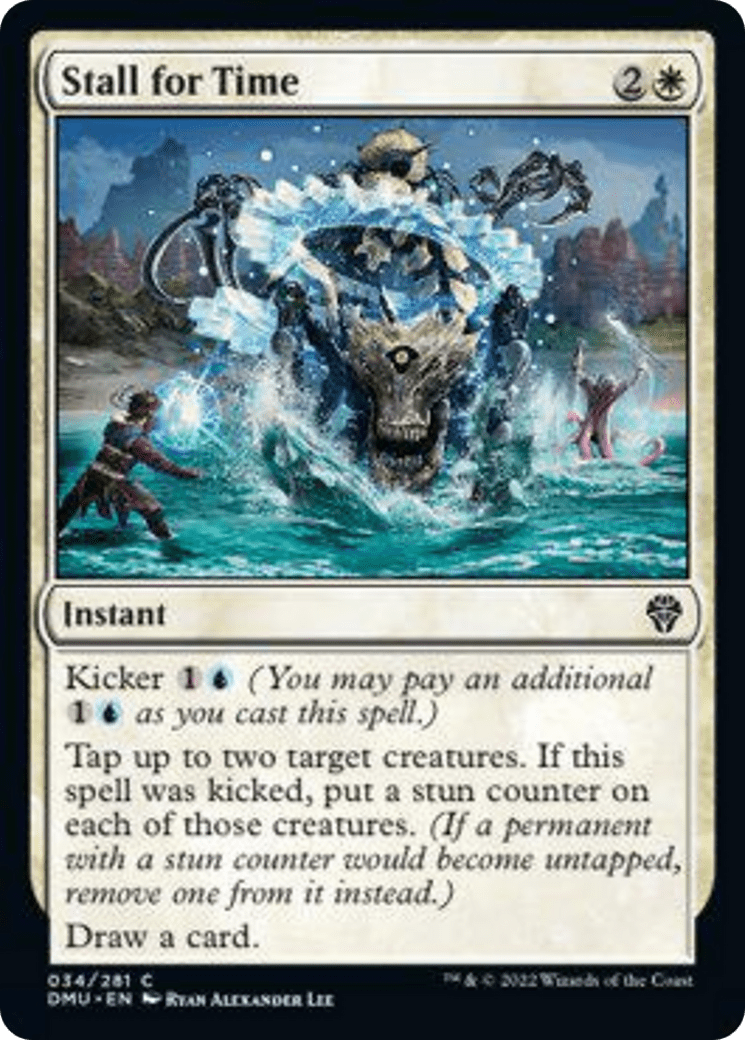

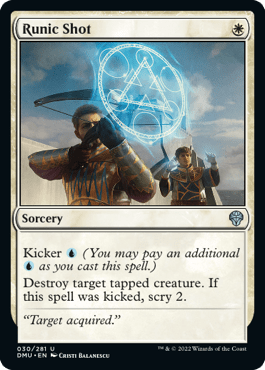
Lastly, Artillery Blast is certainly playable but probably the weakest of the cards. The central issue with the card is that it requires a tapped creature to do anything, which can mean taking extra damage or eating dirt against creatures with vigilance. Two decent workarounds for this are Stall for Time and Clockwork Drawbridge, which also work well with Runic Shot for similar reasons.
Blue
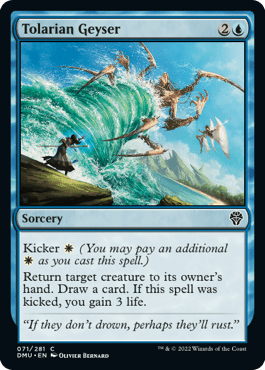

Blue is often a base color for decks leaning into Dominaria United’s instant/sorcery theme. Blue’s best commons are Tolarian Geyser and Tolarian Terror. Terror is a top payoff for instants/sorceries, which is supported by signpost uncommons in Izzet, Azorius, and Dimir. Geyser has been a great interactive spell, with or without access to white mana.
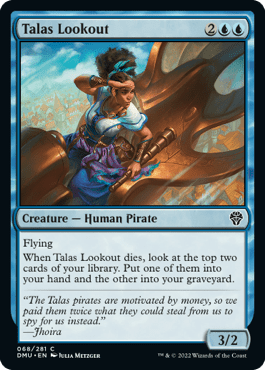
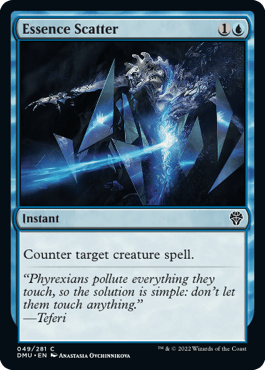
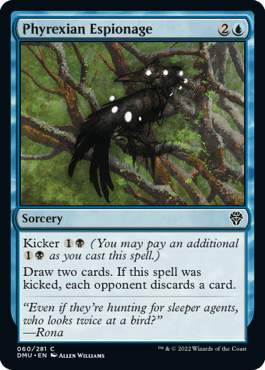
As for the rest of blue, it has some solid cards (Talas Lookout, Essence Scatter, Phyrexian Espionage) and lots of playable filler.
Black
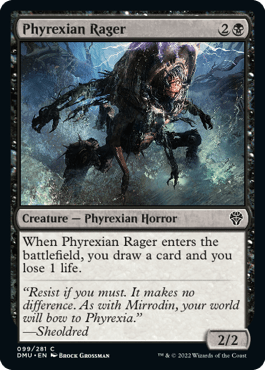
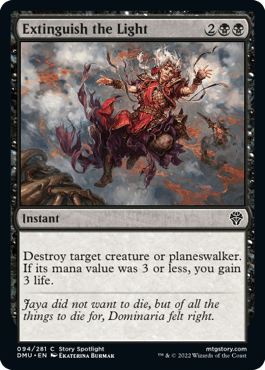
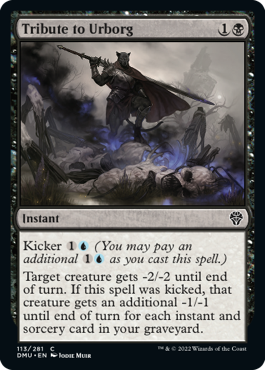
Black is my second favorite color in Dominaria United Sealed because it has lots of solid commons on top of its three best ones. Black’s top commons are Phyrexian Rager, Extinguish the Light, and Tribute to Urborg.
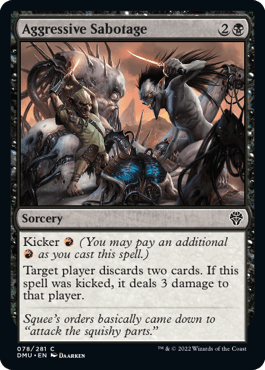
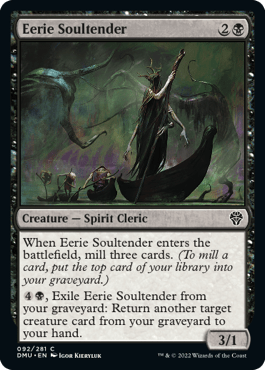

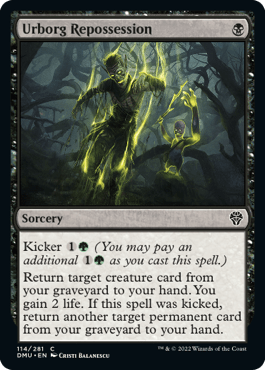
It also has the most card advantage of any color at common: Aggressive Sabotage, Eerie Soultender, Phyrexian Rager, Shadow Prophecy, and Urborg Repossession are all 2-for-1s. Base-black decks are either grindy (usually paired with blue or green), or lean into a sacrifice theme with white or red.
Red
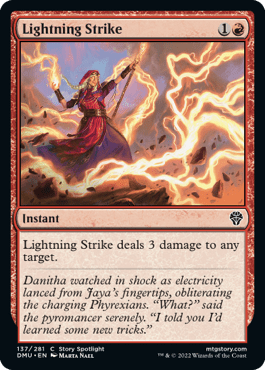

Red is mostly an aggressive color in Dominaria United, to no one’s surprise. Its two best commons are Lightning Strike and Meria's Outrider. Strike needs no real explanation (2-mana Bolt is still a premium Limited card), but Outrider has really outperformed expectations. It isn’t hard to get its trigger to do four or five damage thanks to the common dual lands. Once you start picturing Outrider as a Magnigoth Sentry and Lava Axe for just five mana, you can see how efficient it really is.
These are the two red cards I care most about in 5-color shells. If I don’t have these, Sprouting Goblin, or any bombs, I’m unlikely to build them base red.
Green
Green is my most played color in Dominaria United, thanks mostly in part to its proficiency at both assembling and taking advantage of domain.

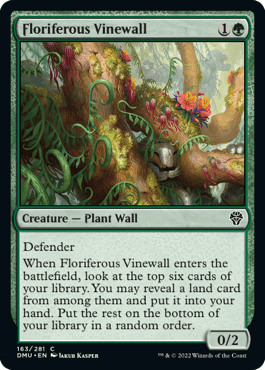
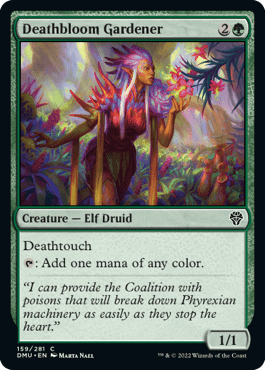

Green has a pretty balanced power level at common: Bite Down is strong removal, its extra mana fixers are useful (Floriferous Vinewall > Deathbloom Gardener > Scout the Wilderness), and it has some good fatties.


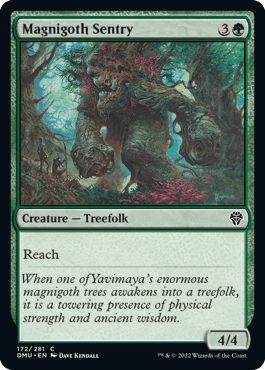

Yavimaya Sojourner, Sunbathing Rootwalla, and Magnigoth Sentry are its best common beaters. Gaea's Might is also the strongest common pump spell in the set, at least in decks that can get it to +4/+4 or +5/+5 for just one mana.
Some green cards I’d avoid are Llanowar Stalker (only play in 2-color aggro decks or with Leaf-Crowned Visionary) and Broken Wings (best out of the sideboard).
Gameplay Tips
Playing Around: Tricks
Double blocking in Dominaria United can be very dangerous because there are quite a few good pump spells lurking around. You can’t play around everything, but you should at least familiarize yourself with all of the set’s potential instants.
Some takeaway guidelines from the list:
- Every color but blue has pump spells, and a lot of them are made in such a way that they crush double blocks. Battle-Rage Blessing, Furious Bellow, and Gaea's Might have enough oomph behind them to win even lopsided combats. This isn’t a set to block with your bomb rares, so having disposable bodies to trade off like Vineshaper Prodigy and Phyrexian Rager is helpful.
- A lot of the removal in this set is instant speed as well, which is good news for control decks. A common tactic I use is to double block with disposables on something like Coalition Warbrute, then have the retrick/kill spell at the ready for my opponent’s Furious Bellow. You might need to take a swing or two to set this up.
- There aren’t a lot of flash creatures. Resolute Reinforcements is the main one I’d play around (don’t send Deathbloom Gardener into open ).
- The mass pump spells of this set are Join Forces, Heroic Charge, and Strength of the Coalition. The latter two are some of the most straightforward ways to turn a pair of Captain's Calls into a game win.
- Always pay close attention to the combat tricks your opponent has played. Even if something catches you off guard game 1, you’ll be better prepared for the possibility of it in games 2 and 3.
Playing Around: Sweepers
The Sweepers
There are seven sweepers in Dominaria United: five rares, one uncommon, and one common.
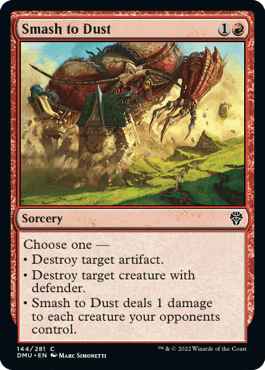
The only common sweeper is Smash to Dust, but it does just one damage so calling it a true “sweeper” is a bit of a stretch. Nonetheless, go-wide decks with X/1s like Captain's Call and Keldon Strike Team must be aware of it.
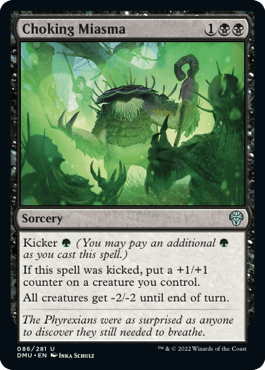
Choking Miasma is the uncommon sweeper of this set. It acts as a fairly standard Infest. The main advantage it has over normal Infest is that its caster can upsize an x/2 and have it survive the sweep. If you’re playing against a base-black opponent and ahead on board, consider holding back that last Captain's Call unless the coast seems clear.
There are five rare sweepers in this set, but two are generally weak cards that you won’t play against (Temporary Lockdown and The Phasing of Zhalfir). I’ll probably never be caught on stream saying, “I think my opponent is about to play Phasing of Zhalfir” unless I’ve seen it in an earlier game. The good sweepers to actually play around are Drag to the Bottom, Temporal Firestorm, and The Elder Dragon War.

Drag to the Bottom is usually going to Languish, but it’s only -3/-3 with 2-color of basics and can get up to -6/-6 with 5-color. The caster is going to have quite a bit of agency with what -X/-X is, since you can hold off on playing extra lands to set up blow outs (staying on 3-color so your Academy Wall survives for instance, then playing the land after).
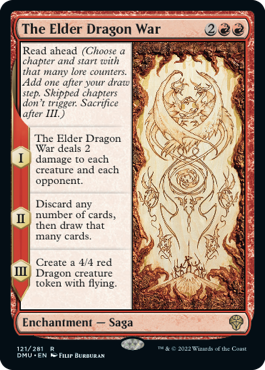
The Elder Dragon War is just two damage for , but I should say “just” in scare quotes because the card does so much more afterwards. It’s also exceedingly difficult to play around. If you slow roll and don’t play into Chapter I, your opponent can just start on Chapter II and still get pretty good value.
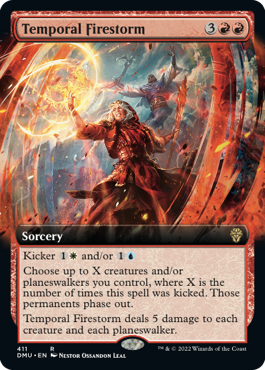
Temporal Firestorm is also quite hard to play around because five damage kills nearly everything. It only misses Yavimaya Sojourner at common, and a few green fatties at uncommon/rare. This gets even worse as the game drags on since Firestorm’s caster can save one or two creatures with its bonus kicker phasing.
Playing Around Them
So how do you play around these sweepers, then? Well, the first step is to consider that your opponent may have them if you seem to be winning.
For this consideration to be just, your opponent needs to have a mana base capable of /. It would take an exceptional sequence (i.e., basic Swamp -> Relic of Legends -> Drag to the Bottom) for them to wrath you if your opponent only has lands in play. On the other hand, you should be a bit more careful when your opponent is in sweeper colors. This is extra true given that Choking Miasma and Drag to the Bottom are black, and Temporal Firestorm and The Elder Dragon War are red.
The second step is standard Limited stuff: you have to make a game-specific decision whether to commit resources or not. There’s no universal heuristic here, but know that paranoia can cost you games in the same manner that carelessness can. It’s not entirely free to take your foot off the gas because “they always have it, man.” Doing so can let your sweeper-less opponent stabilize with just blockers or spot removal when you were out ahead of them too much.
So in a vacuum I’d say this: you should generally commit to the board in Limited with no advance information, unless you’re really ahead.My wager is that you statistically win more games by leveraging your tempo advantage than by playing around rare sweepers blind. From that point on you want to play game 2 and 3 like a normal, paranoid Magicplayer, constantly sweating your opponent’s draws and complaining about luck.
You can also sideboard against sweepers in pretty direct ways. Negate, Pilfer, and Aggressive Sabotage are all strong cards against an opponent who wants to play reactive and punish your board development.
Holding Lands
As a lifelong perfectionist, one of the things I think about in Magic a lot is whether or not holding or playing extra basics is correct. If you’ve ever discarded an important spell to Corrupt Court Official after pointlessly playing a basic land from hand last turn, you’re likely aware of the conundrum I’m describing.
Conversely, you may have held several lands in hand too long and finally drawn that Jace's Ingenuity you were waiting for, only to realize that you don’t have enough mana to immediately deploy the three cards you drew from it since you were “bluffing” nothing. What’s a wizard to do?
This question should always have format specific answers. Let’s go over the pressures on each end for DMU.
Punishment for Not Holding Extra Lands
From opponent: Aggressive Sabotage, kicked Phyrexian Espionage.
From yourself: Losing value on discard/draw effects (Goblin Picker, Thrill of Possibility, The Elder Dragon War) and cards like Soul of Windgrace.
Punishment for Holding Extra Lands
Double spelling after top decking draw spells, not being able to double activate something like Charismatic Vanguard because you were holding one land in hand, opponent has an active The Raven Man and you can’t empty your hand fast enough.
Basically, you can freely play out lands against non-black opponents if you don’t have draw or discard effects. If you do you want to hold excess lands so that you can gas up when you finally top deck that looting spell you wanted.
When in doubt it’s safest to hold one untapped basic in hand. This is a simple compromise that protects your better spells from Phyrexian Espionage without risking your development too much. But if you know your opponent has Aggressive Sabotage, play to either empty your hand or hold at least two basics late game.
Sideboarding
The most general sideboard cards you’ll use in Dominaria United are Smash to Dust, Broken Wings, and Choking Miasma. Two of these cards crush aggressive and tokens strategies, while Wings is a great out to enchantment-based removal and fliers.
Because most pools are so colorful and rife with options, there’s quite a bit of extra sideboarding you can do:
- Adding more removal and blockers on the draw, trimming some fat or card advantage to ensure you don’t get run over.
- Doing the opposite on the play since you know that you’ll have a tempo lead and so more time to play that second Shadow Prophecy you were eyeing in deckbuilding.
- Playing more small creatures and less removal spells against an opponent who killed your bomb rare with a Benalish Sleeper last game.
- Optimizing removal spells for your opponent’s threat base, because Destroy Evil rotted in hand all game long against your Boros opponent.
Secondary Deck Gambit
A classic approach to Sealed is to have an aggressive deck waiting in the wings to catch greedy opponents or try to cheese someone on the play. This strategy makes a good deal of sense in Dominaria United for lots of pools because there’s a clear rivalry in this format between speed and greed. If your pool gets out-greeded by your opponent’s, your best bet may be to play a 2-color aggressive deck and turn 2-drops sideways.
This is easiest on Magic Online, where you can export your 2-color aggro deck and quickly load it in between games. In paper you want to have this option pre-sleeved, and on Arenayou need to be prepared to click quickly!
Should You Ever Draw First?
Whether to play or draw is a common question in Magic, but the common wisdom is that you should choose to play the vast majority of the time. Dominaria United Sealed is generally pretty slow, but just being somewhat slow isn’t enough to make drawing correct these days.
Instead, you want to draw if your deck is full of cheap 1-for-1 removal, sweepers, and Aggressive Sabotage. Sabotage is particularly notable because other card advantage spells like Phyrexian Espionage and Shadow Prophecy tend to play better when going first since you have more time to use them. Sabotage has the same principle on timing but tends to be most vicious when your opponent only has two or three cards in hand, which happens faster if you took the draw.
Unless your deck fits that very specific black-based control mold (Sabotage, Tribute to Urborg, Battlefly Swarm, etc.), save yourself the headache and choose to go first! Being on the draw gives your opponent more time to set up their mana base and draw extra cards. It also makes you more likely to get run over by a strong aggressive draw.
Sealed Deck Examples
To this wrap up, here are some examples of personal successes in Sealed to showcase how this all looks in practice!
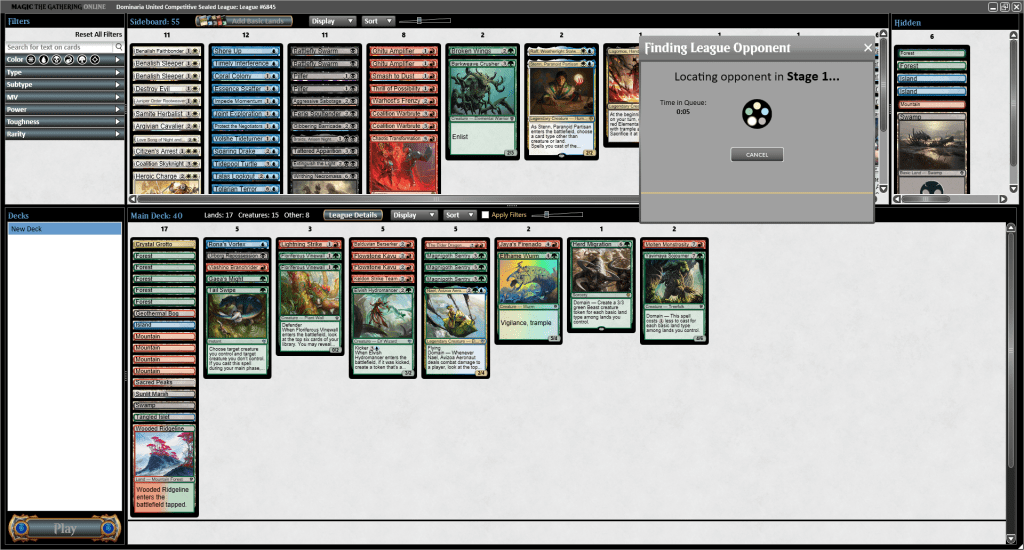
4-1 in a Sealed League, base Gruul midrange with extra splashes for domain payoffs, Rona's Vortex, and Urborg Repossession.
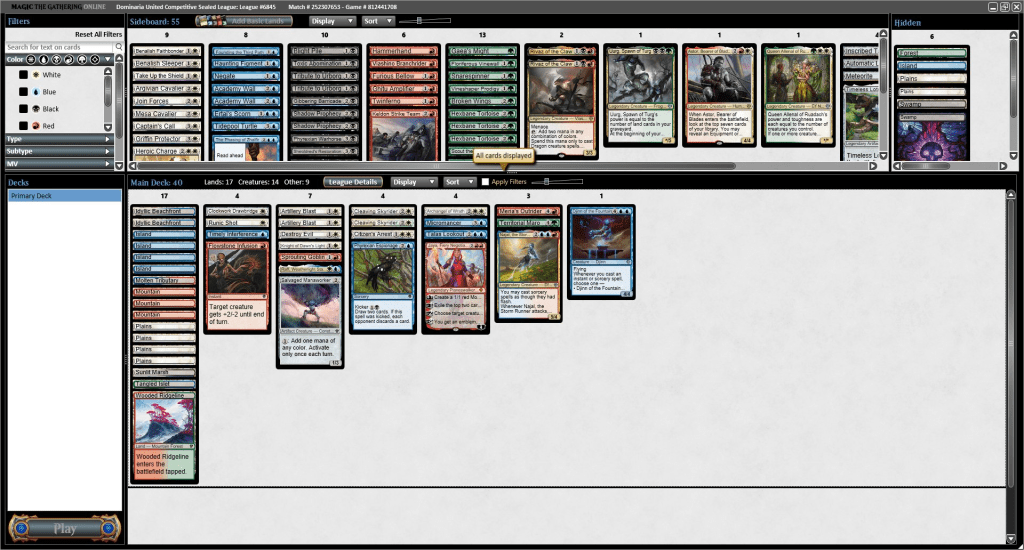
5-0 in a Sealed League, base Jeskai with several instant/sorcery payoffs (Raff, Djinn, Najal), two bombs, lots of removal and a bit of card advantage.
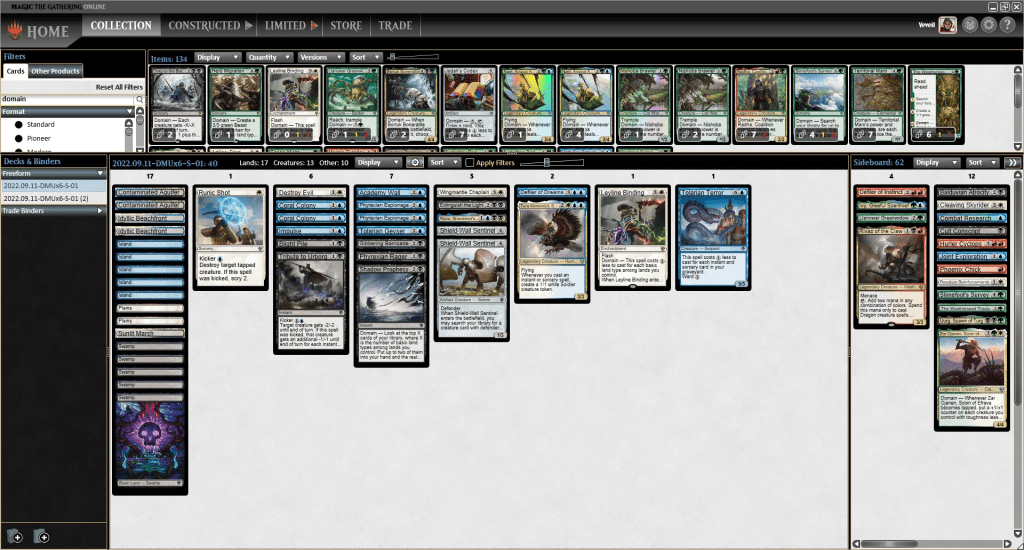
Esper () deck I went 8-1 with in a Sealed PTQ, primarily built around my four defender payoffs and two Shield-Wall Sentinels. The rest of the deck was mostly card advantage (Shadow Prophecy and Phyrexian Espionage) and removal spells.
Wrap Up

Your Fate Is Thrice Sealed | Illustration by Steve Prescott
I hope you’ve enjoyed this deep dive into Dominaria United Sealed! Some of this info definitely overlaps with the set’s Draft format (by the way, be sure to check out our guide for that), especially the build-around rares which are easier to pull off in Draft. Still, I wanted to be thorough and include extra information for those who want to get every single thing they can out of their pools.
What’s been your experienced with this Sealed format? Have you gotten to open a ton of bomb rares, or are you still searching? Let me know in the comments down below or join the discussion in the Draftsim Discord. And don’t forget to grab Arena Tutor if you’re playing on MTGA.
Until next time, may you open more dual lands than you know what to do with!
Follow Draftsim for awesome articles and set updates: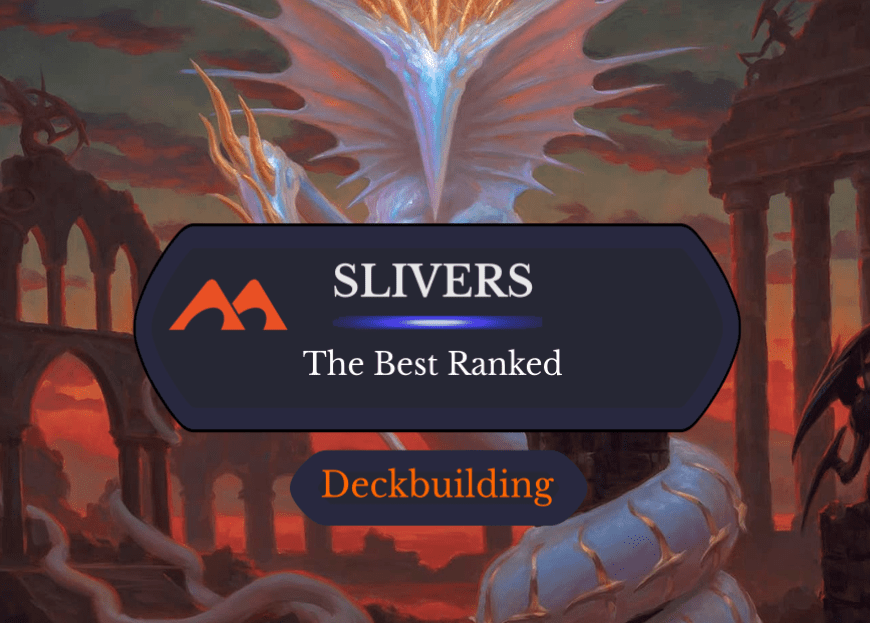
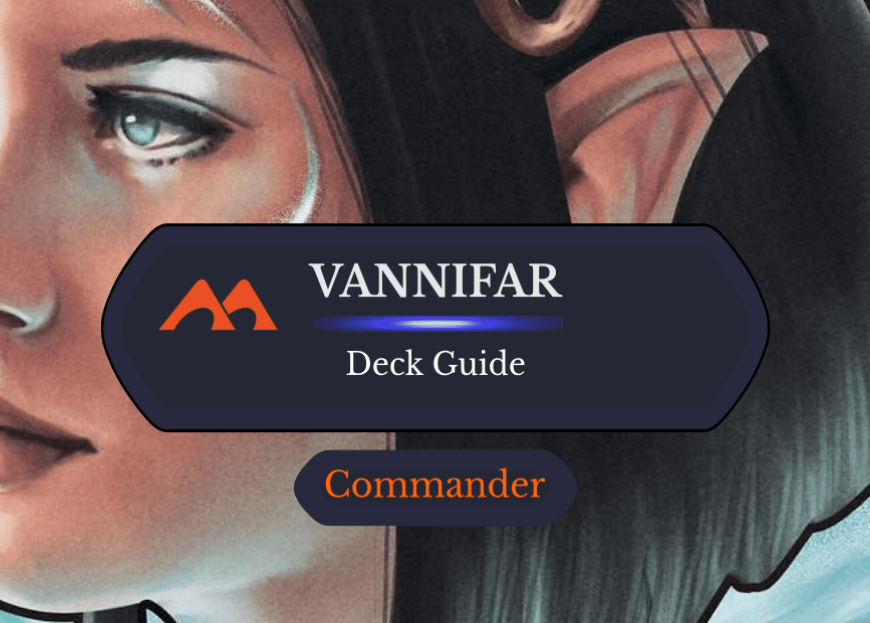
Add Comment